10-20-2016, 06:34 AM
First casting and first failure!
I clearly have a lot to learn with this home foundry thing; but I guess if it was easy everyone would be doing it.
I at least managed to get a pattern made and a flask rammed. The pattern is for the broken power-feed gearbox for the Victoria U2 mill.
First rammed half the pattern in the drag
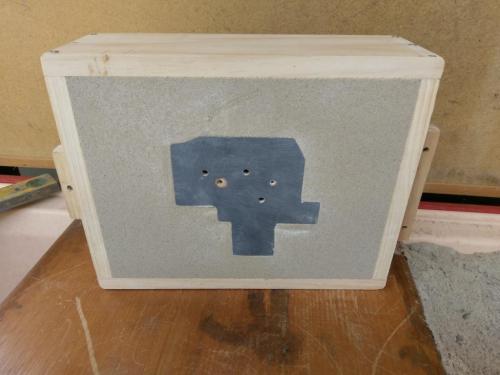
So far so good, put the cope on and rammed the other half, had a little sand-sculpting to do after pulling the patterns
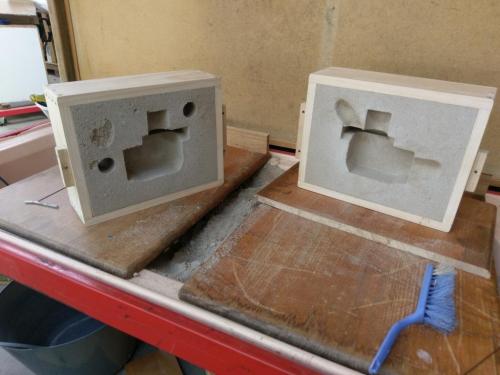
The finish in the cavities was not as good as i would have liked, not sure why but some loose grains came away with the pattern and left a bit of a pock-marked cavity. Also I think the flask was just a tiny bit too small for this pattern, the sprue and riser are very close to the cavity.
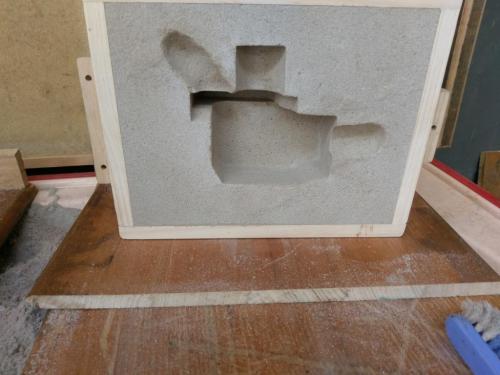
I couldn't see into the furnace with it running, wasn't sure whether I had the crucible filled. When I started the melt I was confident I had plenty of aluminium on hand but I started to worry I didn't have enough, I was hunting out little morsels of scrap aluminium to drop in.
When I shut the burner down and opened the furnace, the crucible was overflowing. Even so, the pour was waayy short. Only half-way up the sprue when I ran out of metal. Going to have to make a bigger crucible for aluminium, this was my biggest carbon-graphite crucible, A8.
Poured the flask on my moulding bench, not sure that I'll do that again- hard to keep the burnt sand separate when breaking out.
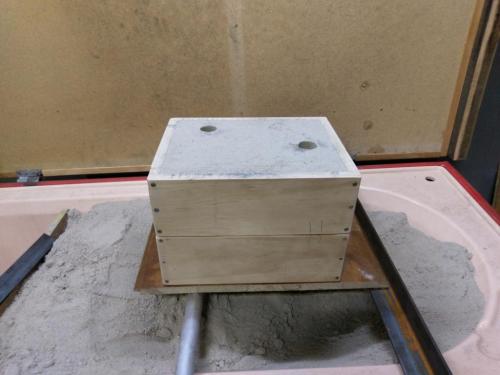
Here's the casting, obviously short but any thoughts on why the surface looks so awful would be welcome.
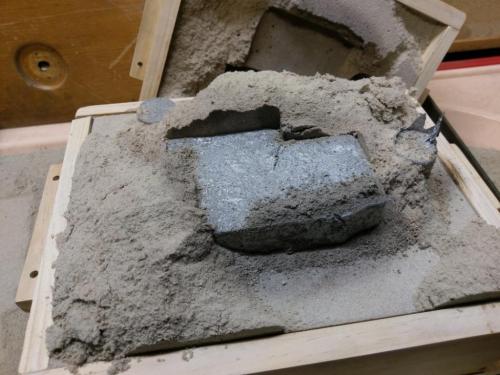
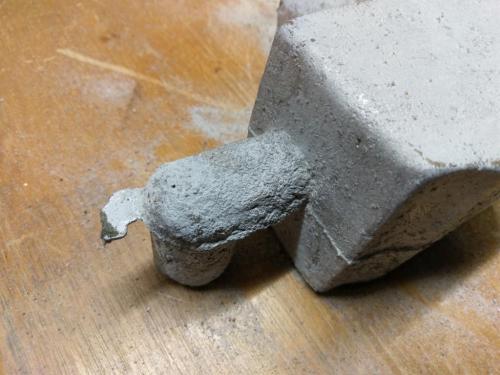
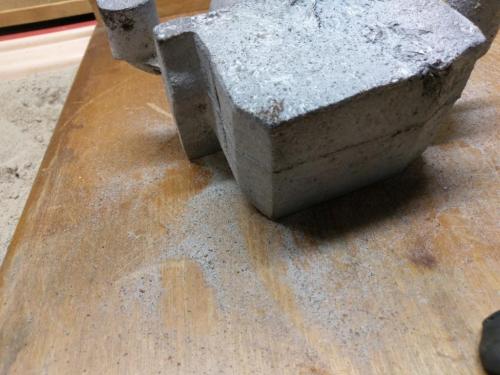
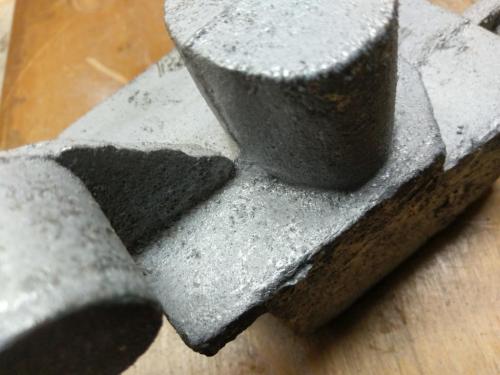
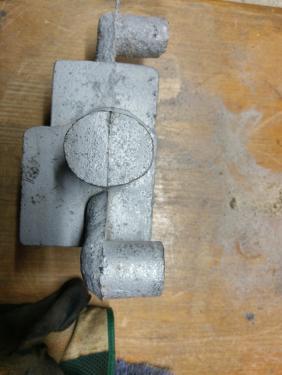
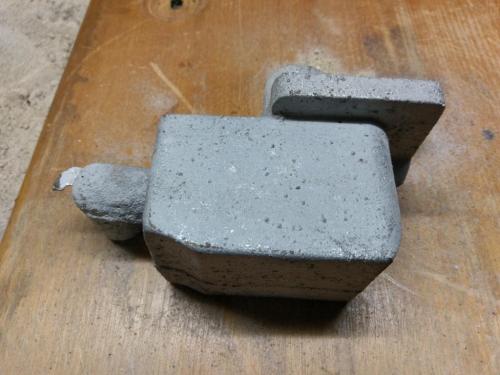
I'll be interested to cut into this and see whether it is porous. At least failures can be melted down. I have a couple of transmission housings that I need to break into useable pieces so I don't run out again during a melt; need to pay more attention to calculating quantities in future too. It looked like a lot of aluminium before I poured it!
I was thinking of putting a core in this casting but decided to keep it simple for a first attempt. I guess it wouldn't have poured short if I had put a core in it; might have to look at that for the next attempt.
I clearly have a lot to learn with this home foundry thing; but I guess if it was easy everyone would be doing it.
I at least managed to get a pattern made and a flask rammed. The pattern is for the broken power-feed gearbox for the Victoria U2 mill.
First rammed half the pattern in the drag
So far so good, put the cope on and rammed the other half, had a little sand-sculpting to do after pulling the patterns
The finish in the cavities was not as good as i would have liked, not sure why but some loose grains came away with the pattern and left a bit of a pock-marked cavity. Also I think the flask was just a tiny bit too small for this pattern, the sprue and riser are very close to the cavity.
I couldn't see into the furnace with it running, wasn't sure whether I had the crucible filled. When I started the melt I was confident I had plenty of aluminium on hand but I started to worry I didn't have enough, I was hunting out little morsels of scrap aluminium to drop in.
When I shut the burner down and opened the furnace, the crucible was overflowing. Even so, the pour was waayy short. Only half-way up the sprue when I ran out of metal. Going to have to make a bigger crucible for aluminium, this was my biggest carbon-graphite crucible, A8.
Poured the flask on my moulding bench, not sure that I'll do that again- hard to keep the burnt sand separate when breaking out.
Here's the casting, obviously short but any thoughts on why the surface looks so awful would be welcome.
I'll be interested to cut into this and see whether it is porous. At least failures can be melted down. I have a couple of transmission housings that I need to break into useable pieces so I don't run out again during a melt; need to pay more attention to calculating quantities in future too. It looked like a lot of aluminium before I poured it!
I was thinking of putting a core in this casting but decided to keep it simple for a first attempt. I guess it wouldn't have poured short if I had put a core in it; might have to look at that for the next attempt.
Lathe (n); a machine tool used in the production of milling machine components.
Milling Machine (n); a machine tool used in the production of lathe components.
Milling Machine (n); a machine tool used in the production of lathe components.







